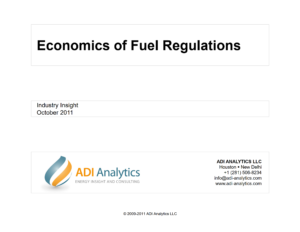Description
Report #2: Role of Innovation in Reducing Costs of Engineered Geothermal Systems
Published in December 2013. 94 pages. 56 exhibits.
The second report focused on cost modeling to identify new technologies and their impacts on cost reduction in advanced geothermal energy technologies such as Engineered Geothermal Systems (EGS) along with analysis of the key gaps and needs in the supply chain to support a scenario where EGS capacity grows rapidly. Key findings covered in this report include the following:
- This report focuses on assessing cost impacts of new technologies. Specifically, this report seeks to understand cost impacts of various technologies in each of the main cost categories of EGS, including exploration, drilling, well completions, reservoir stimulation, and power plant technologies. Each technology is evaluated for its benefits or challenges, and impact on LCOE. Further, risk and uncertainty analyses were conducted to estimate a range of LCOE outcomes for a variety of technology pathways.
- This report will benefit a wide variety of stakeholders, such as scientists and technologists, policy makers, investors, and project developers, who can all use these findings to evaluate and prioritize various technologies based on their economic impacts.
- A high-level review of literature was conducted using various sources including conference papers, journal articles, U.S. DOE reports, national laboratory reports, demonstration projects, workshops, and peer review reports. The literature review helped identify, inventory, and evaluate a number of technologies and innovations with the potential to improve performance of EGS plants and, therefore, reduce EGS costs.
- Expert elicitations were conducted formally and informally to gather various estimates and opinions of a broad range of experts to improve our understanding of potential cost reductions due to various innovations and technologies. By synthesizing the resulting data and opinions, uncertainties around key metrics, innovations, and technologies were better understood and evaluated for impact on EGS costs.
- The LCOE impacts of various technologies and innovation were assessed using a customized version of the Geothermal Electricity Technology Evaluation Model (GETEM). A spreadsheet model, GETEM was developed by the U.S. DOE to estimate and analyze the costs, economics, and performance of various geothermal technologies.
- This section summarizes for context results from another task of this project which was designed to identify and rank, both qualitatively and quantitatively, cost components of EGS so that reductions can be made in those areas to improve the commercial feasibility of EGS. Expert elicitation has suggested that drilling and completions is the largest cost component followed by reservoir development and stimulation and power plant and surface equipment.
- The first commercial EGS plant will have to overcome a number of technological, economic, and regulatory challenges. However, there is no shortage of progress toward establishing feasibility and reducing costs through RD&D efforts around the world. Collectively, these RD&D efforts have resulted in the conceptualization of new technologies as well as the identification of existing technologies – especially from the oil and gas industry – that may help with reducing LCOE of EGS plants. This report inventories such technologies, and analyzes them to quantify their potential to reduce LCOE of EGS plants.
- Exploration technologies are important to EGS development as success rates increase with the accuracy of exploring EGS potential.
- Costs associated with exploration have very little impact on LCOE, yet should still be a focus of cost reduction as small reductions would still be economically beneficial in the long term.
- Improved geothermal imaging technology is assessed for its cost reduction potential and probability-weighted impact on LCOE of near-field and deep EGS plants.
- Drilling costs are responsible for an overwhelming percentage of the overall cost of EGS development, especially in deep EGS plants. As a result, we identified and assessed drilling technologies that have the potential to reduce costs.
- By increasing the rate of penetration, improving the productivity of drilling crews, eliminating bit trips, and improving safety, drilling time and, therefore, costs can be reduced. These strategies are evident in the ten technologies across three classes that were evaluated, which include technologies for expandable tubulars, drilling with casing, insulated drill pipe, chemically enhanced drilling, spallation, particle jet drilling, laser drilling, percussion drilling, polycrystalline diamond compact, and high-temperature roller cone drill bits.
- Several technologies and methods improving well construction are under development, and this report analyzes a select few of those technologies for their potential to reduce EGS costs. Those technologies include drilling-with-casing, step-wise lining, and wellbore lining while drilling.
- Reservoir stimulation technologies may reduce costs but most are intended to be used as complementary techniques.
- Several technologies and methods improving reservoir stimulation are under development, and this report analyzes a few including chemical stimulation and use of supercritical carbon dioxide as a geo-fluid.
- Power plant technologies such as Variable Phase and Euler turbines, and the gravity head energy system, have the potential to reduce overall EGS costs, and were evaluated in this report.
- The LCOE impacts assuming the collective deployment of all of these technologies albeit with their respective uncertainties were assessed. A scenario where a large number of new technologies and innovations could be deployed is unlikely in the near term but potentially feasible in the medium and long term.
- Finally, the LCOE following technology improvements has the potential to be very close to the targets set by U.S. DOE.
























